Excerpt from ‘The history of Thanalan, from Belah’dia to Ul’dah’ by Archon Niniri Niri.
One of the most impressive ruins of the early Sixth Astral Era, Qarn is any archeologist or historian’s dream, and so this author felt extremely grateful to get the chance to poke around after it was cleared by adventurers. Qarn was a temple of Azeyma, goddess of the sun, built by Sultan Tatamefu II of Belah’dia that remained important to members of the Sultanate in the years since. The temple was undergoing a series of expansions underground, presided over by Sultan Lalafuto IV before internal strife and monetary issues forced their cancellation, followed soon after by the fall of Belah’dia. The ancient kingdom fell to a massive civil war waged by two princes that resulted in the rise of Ul’dah and Sil’dih. The temple was filled with traps prior to its doors closing for eternity, and it is only because of the intervention of the adventurers that the team wwas able to survive even a brief expedition within Qarn.
The Sun Terrace
Qarn opens on a wide plateau of elaborately carved stone lit with blue aether crystals. The decorative style characteristic of Belah’dian temples is on full display here, and at the center of the terrace is a damaged plinth intended to represent Azeyma in her capacity as the ‘warden’, a title ascribed to her amongst the Twelve. The grand core of the temple is visible from here, topped by a pyramid-like structure decorated with Qarn’s signature guardian statues.
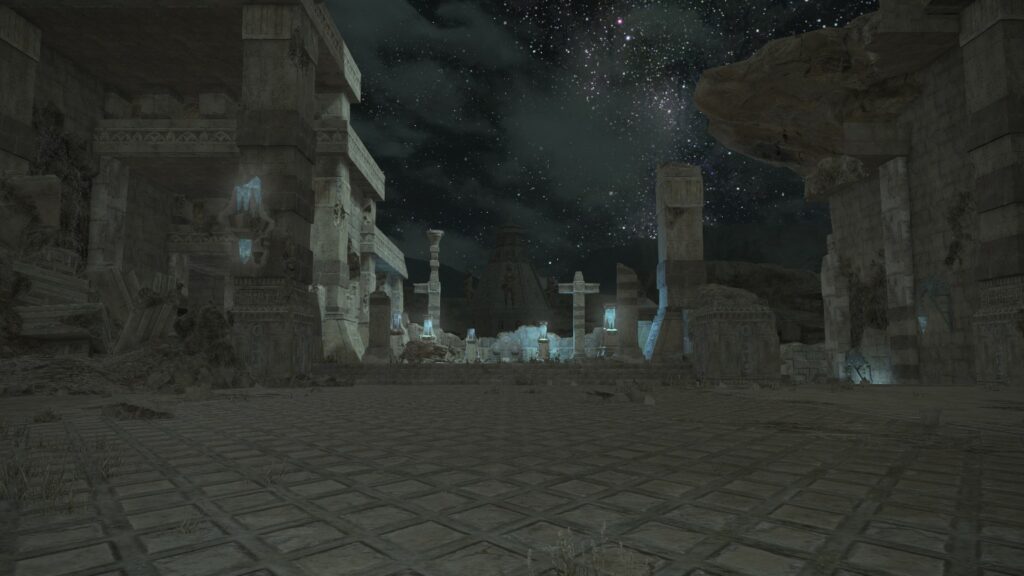
The Inner Sanctum
The toll taken by time on Qarn is immediately apparently upon entering the Inner Sanctum. These corridors are almost certainly part of the underground expansions planned by Lalafuto IV, left incomplete and now collapsing. The dirt and sand of Thanalan leaks in through collapsing walls, and entire sections of the sanctum have tilted and now sit askew, likely disturbed by weak, unfinished structural engineering as well as underground tremors. The adventurers who cleared Qarn described two artifacts found within the sanctum, the helm of might and gem of affluence. The gem is obviously a precursor to the jewel of prosperity, adopted in the modern day bas heraldry of Ul’dah.
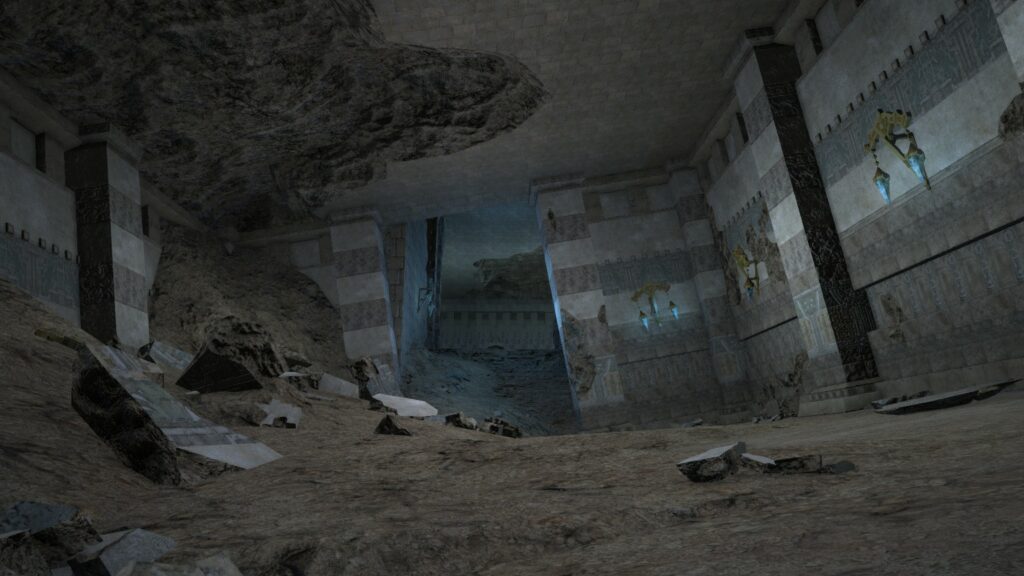
The Oratory of Tatamefu II
Tatamefu II was the sultan that initially built Qarn, and this was either a chapel built by him or in his honor after his death. An oratory is a place of worship built by an influential individual and donated to a group of worshippers as an act of devotion, in this case to Azeyma. A number of quadrupedal statues frame this room, surrounding a series of brass or gold plates that seem to purify the soul of individuals that stand atop them, according to investigations by the research team. This may relate in some way to Azeyma’s role as the sun goddess, and the cleansing nature of flame and the sun in many theologies.
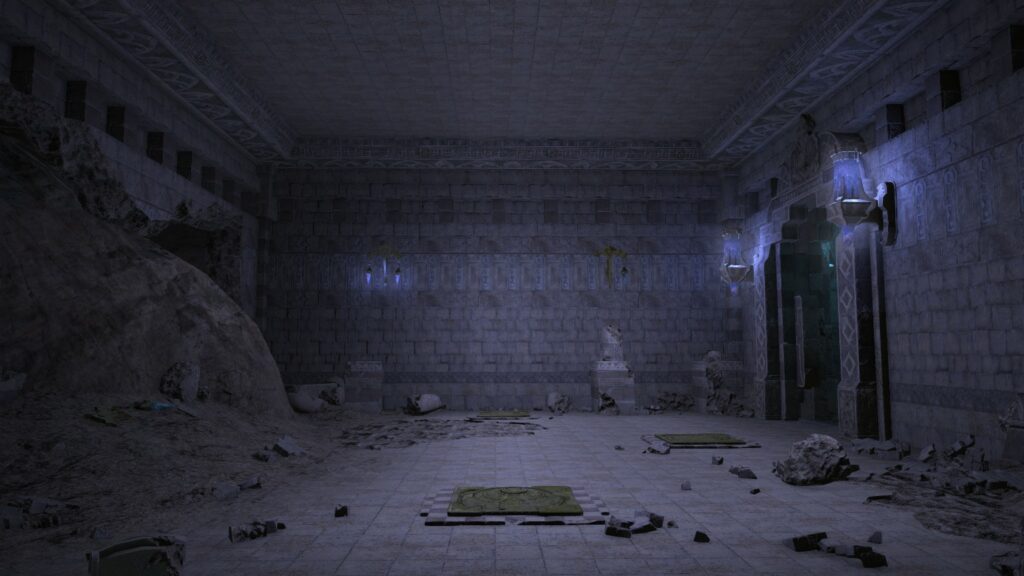
The Rosarium of Lalafuto I
The second Sultan recorded to have further made constructions within Qarn is Lalafuto I, first of his name. Although time and the desert sun have destroyed the ancient rose gardens of Qarn, the plaza is still beautiful and bears the mark of Azeyma in various places throughout its architecture. Two further stone artifacts were catalogued here, the fruit of knowledge and the flame of magic. Here we see a clear root of Ul’dah heraldry, the flame of magic, surely inspired by the Mhachi mages that founded Belah’dia, fused with the helm of might to represent a fusion of powers both magical and temporal to create the flame of might in modern Ul’dahn heraldry. Ul’dah took the gem of affluence as its other symbol, transforming it into the gem of prosperity, while the now-fallen Sil’dih adopted the fruit of knowledge and transformed it into the grapes of knowledge. It should be noted, however, that the gem of prosperity in Ul’dah’s heraldry now represents wisdom, possibly representing a partial adoption of the fruit’s original meaning.
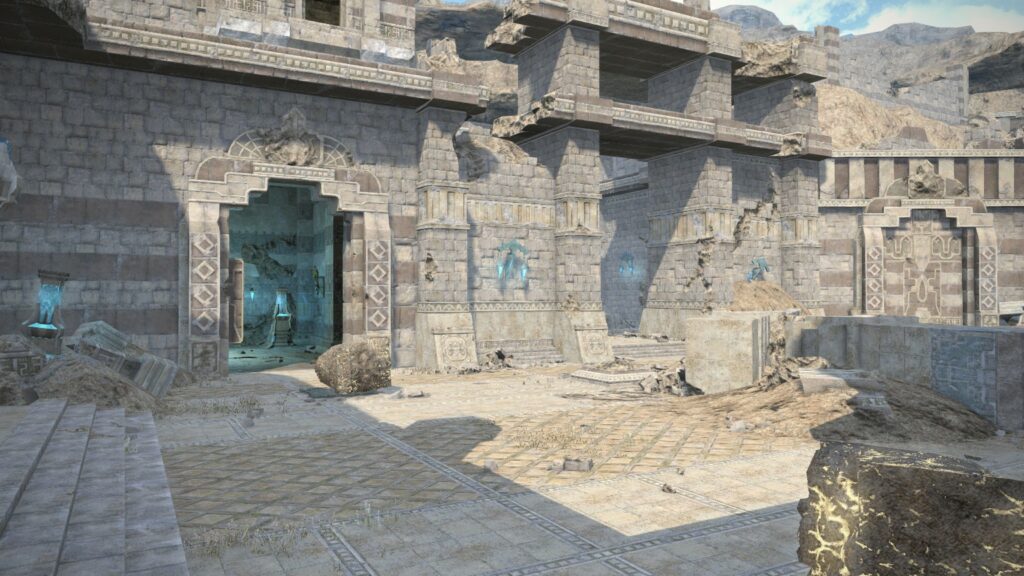
The Lower Sanctum
Another of Lalafuto IV’s construction projects, this secondary sanctum is much less finished than the prior one, and essentially takes the form of roughly carved caves lit by aether crystal lamps of a typical form. There is a partially bricked-over hole in the ceiling of the sanctum, quite plausibly serving to view the sacred sun while underground.

The Adytum of Lalafuto IV
Intended to be the crown jewel of Lalafuto IV’s extensions to the temple-complex, the adytum was left incomplete after the fall of Belah’dia to dynastic conflicts. The two large metal doors that would seal the adytum were likely included as part of the chamber’s function. An adytum is, after all, the most sacred and private room in a hall of worship, typically restricted to members of the clergy and host to the holiest of relics.
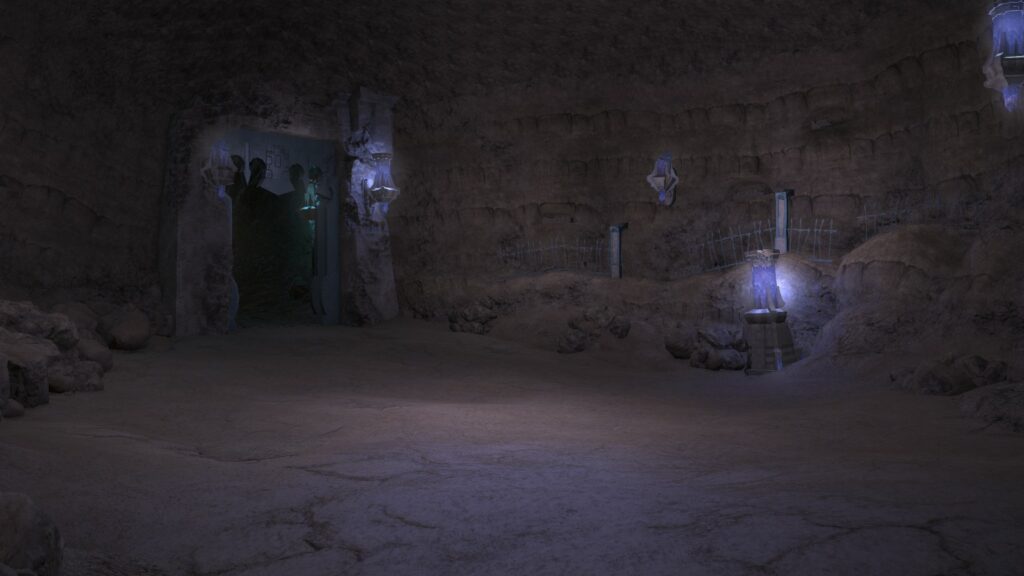
The Vaults of Steel, Wealth, Aether and Secrets.
At the rear of Lalafuto I’s rosarium is a pair of sealed vaults, locked behind doors unlocked by the helm of might, gem of affluence, flame of magic and fruit of knowledge respectively. The vault of steel likely acted as the armory for the city, while the vault of wealth likely acted as the vault for the sultanate’s wealth. The vault of aether almost certainly contained particularly valuable magical items and reagents, while the vault of secrets probably contained state secrets and records of the sultanate.
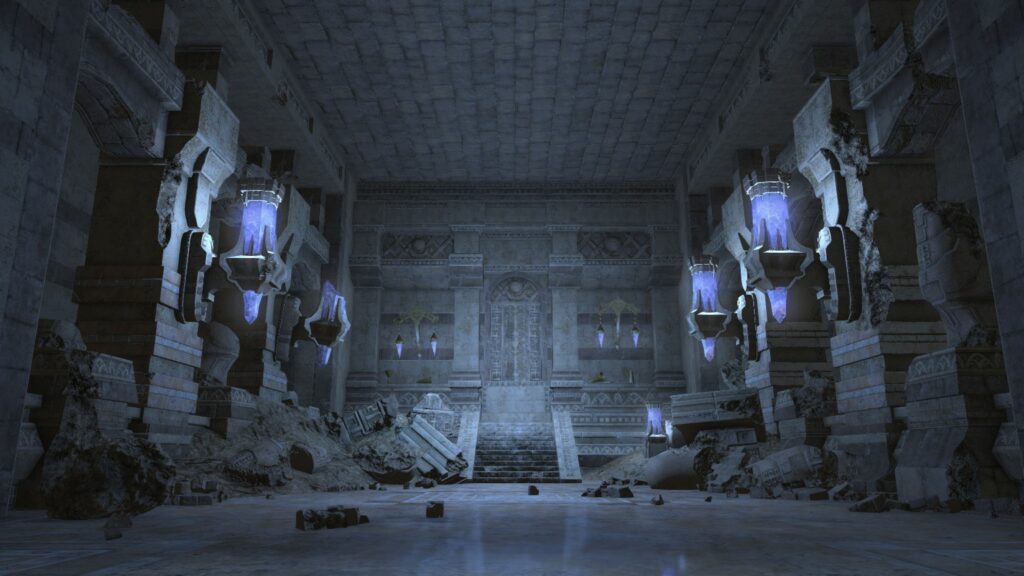
The Rosarium of Lalafuto III
Just as with the previous Rosarium, this garden has turned to sand and dust in the modern day. Built by the third expander of the temple complex, Lalafuto III, who has a somewhat dubious legacy. Lalafuto III was succeeded by his wife instead a direct heir, having disappeared midway through his reign. Lalafuto spent the majority of his time with a beloved consort in life, and folk tales have long theorized that he either left the throne to spend his life with this consort, or that he was murdered by his wronged wife.
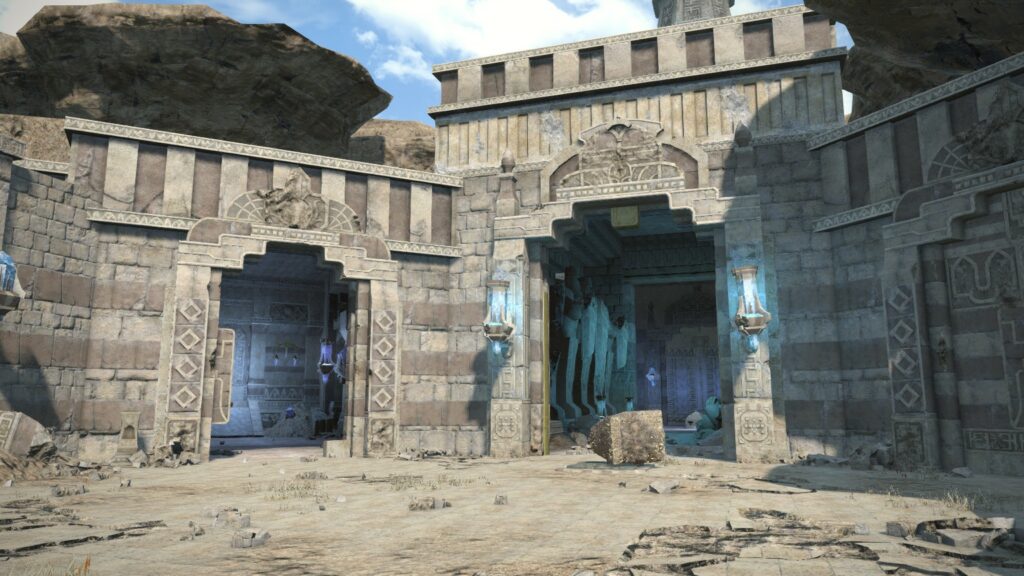
The Inquisitor’s Measure
When one enters the interior of Qarn’s ultimate structure, they are greeted by a long corridor framed by large statues. Each statue carries a large tower-shield, clearly denoting their role as guardians of the temple’s interior. Further within is a larger room containing a set of stone scales, named the scales of judgement. In order to proceed further, one must place the flame of magic on the left podium and the fruit of knowledge on the right. These clearly call back to the lesson of Mhach, surely learned by Belah’dia, founded by survivors of the city state. The balance of power and knowledge to avoid the reckless use of magic that caused the Sixth Umbral Calamity. The inquisitor referred to in this area’s title is the judicial processes contained within the chamber past this one, and they are taking the measure of those who come before them by choosing which combination of power, knowledge, might and affluence the petitioner values.
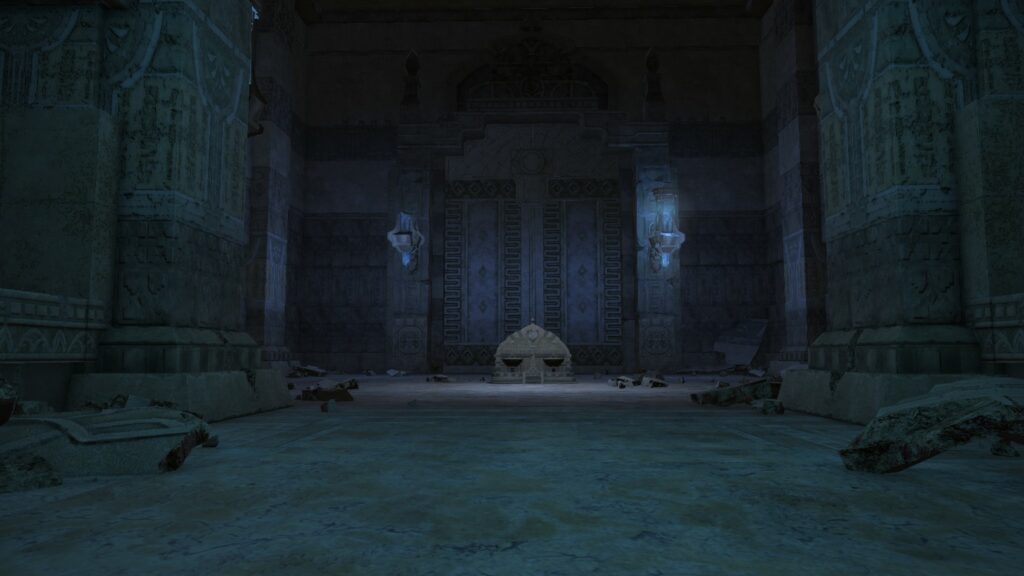
The Oratory of Memeto the Meek
Memeto’s oratory is blocked off by fallen stone, but the metal door to the structure is still visible. As stated previously, an oratory is a church personally donated by an influential figure to a clergy. The corridor to the oratory was hidden by illusory magics linked to the scales. Memeto was the wife of Lalafuto III, who took over from her husband as Sultana after his disappearance. Why exactly she needed her oratory hidden behind both an illusory wall and a massive metal door is unclear.
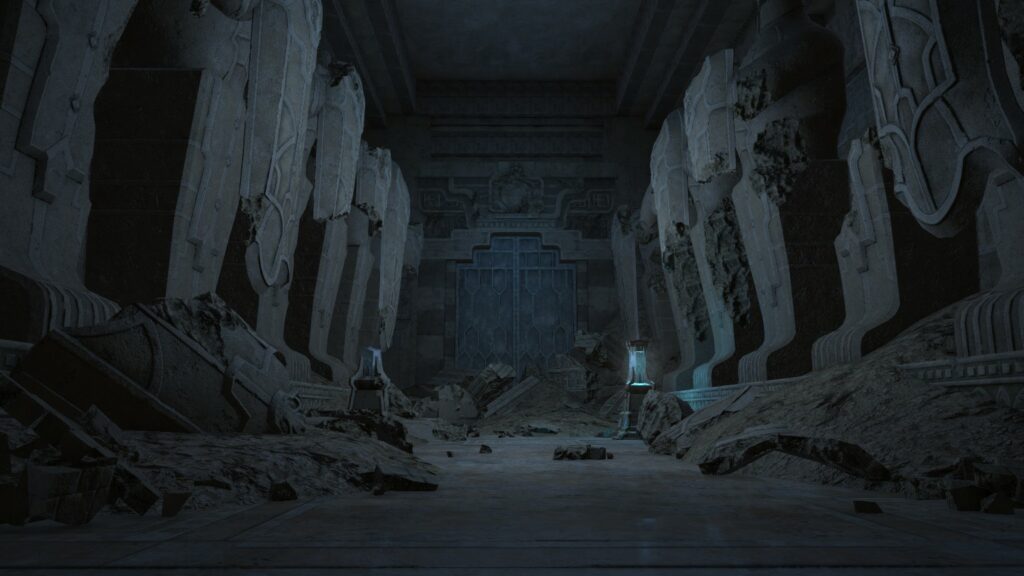
The Cameral Chamber
A large circular chamber built around a number of brass floor plates and punctuated by a large stone throne at the very back of the room, emblazoned with the crest of Azeyma. This throne may have been for a sultan, high priest or holy judicator to sit in during Belah’dia’s life, or it may be simply symbolic and intended to be Azeyma’s own throne. A cameral chamber is, of course, one devoted to judicial processes, and thus likely acted as a place for passing and implementing holy laws. The presence of the battle-ready adjudicator statues within likely means that this often included death sentences or trials by combat.
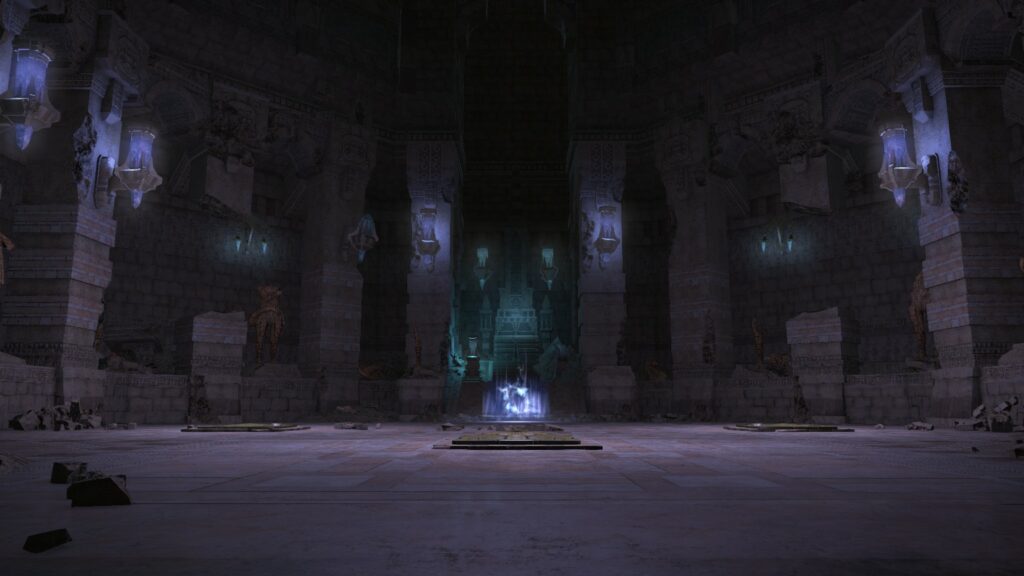




Leave a Reply